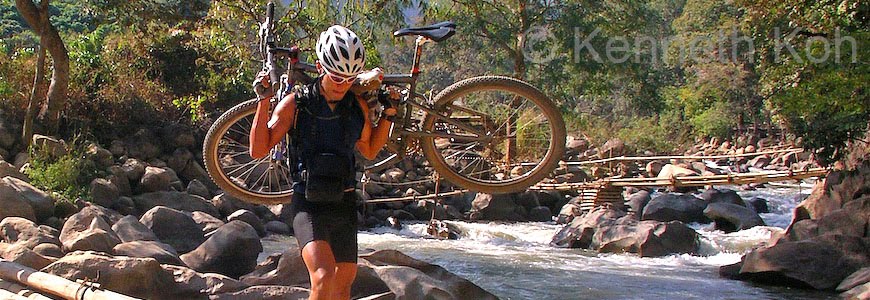 Nick Heidfeld, BWM Sauber. Nikon D300, 50-150mm at 150mm, 1/320, f/2.8, ISO 2000.
Nick Heidfeld, BWM Sauber. Nikon D300, 50-150mm at 150mm, 1/320, f/2.8, ISO 2000. What camera gear do you need to shoot the Singapore Night F1? Speed is the key: High frame rates, fast glass, fast shutter speeds, and clean high ISOs. Ideally, we’ll each have a full-frame camera like the Nikon D3 or Canon 1Ds Mk III with a 300mm f/2.8 lens to do the job. Well… I can dream, can’t I?
We can get the same field of view on a crop sensor camera like the Nikon D300/D90 or Canon 50D/40D/etc with a 70-200mm f/2.8 lens. Throw in a 1.5x teleconverter, and an ultra-wide zoom for crowd shots, and you’ve got a very versatile kit for walking around the circuit.
 Any Ferrari Fans Here? The crowd along the Raffles Avenue straight during Practice. Nikon D300, 12-24mm.
Any Ferrari Fans Here? The crowd along the Raffles Avenue straight during Practice. Nikon D300, 12-24mm.A walkabout ticket is the cheapest, and ironically, will get you closest to the action. Prior to the actual race, it’s a good idea to scout out where you want to be during the practice/qualifying session.
You’ll need to get as close to the safety fence as you can. The closer you are to the fence, the easier it is to defocus the fence. Typically though, you will be at least 1.5m away from the fence. Using a large aperture will also help to defocus the fence, making it almost invisible.
 Lap #1. The crowd rises to get some shots. From the back, it's difficult to throw the fence out of focus. You'll need to get closer.
Lap #1. The crowd rises to get some shots. From the back, it's difficult to throw the fence out of focus. You'll need to get closer.The fence will also cause autofocus problems. Either slow down the AF reaction to stop it from jumping between the car and the fence (good luck there) or use Manual Focus and pre-focus on a spot on the track and wait for a car to reach it.
 Not Sharp Enough. Jenson Button of Honda being chased by Heikki Kovalainen of Mclaren-Mercedes. Nikon D300, 80-400mm at 340mm, 1/250, f/5.3, ISO 3200.
Not Sharp Enough. Jenson Button of Honda being chased by Heikki Kovalainen of Mclaren-Mercedes. Nikon D300, 80-400mm at 340mm, 1/250, f/5.3, ISO 3200.What about the lightweight travel photography equipment that I use? My 80-400mm f/4.5-5.6 had the right focal range, but with a maximum aperture of f/5.6, it was just too slow. With the slow shutter speeds I was forced to shoot with, none of my head-on shots were sharp. My best chance to get a good shot was to pan shots. I.e. follow focus on the car as it passes. Still, that’s all I had, so I kept shooting… and hoped I’d get lucky.
 Lucky Shot. Lewis Hamilton, Team McLaren-Mercedes, being chased by Ferari's Kimi Raiknonen. Nikon D300, 80-400mm at 400mm, 1/160, f/5.6, ISO 2000.
Lucky Shot. Lewis Hamilton, Team McLaren-Mercedes, being chased by Ferari's Kimi Raiknonen. Nikon D300, 80-400mm at 400mm, 1/160, f/5.6, ISO 2000.Best accessories to bring?
A stool or 3-step ladder to stand on (if you can get it through security), and/or a tripod or monopod.













